G-MATRIX
A generative BI solution that leverages AI technology to query, analyze, and visualize database using natural language inputs.
- AI_Data_Analyst
- Voice_Driven_Analytics
- Enhanced_Security_With_OnPremise


G-MATRIX is a generative AI solution that not only extracts and analyzes databases based on users’ natural language queries but also predicts near-future trends to provide actionable insights essential for businesses. With this advanced AI solution, business users can effortlessly query and analyze data without requiring knowledge of database structures or SQL coding, enabling efficient and informed decision-making. By simply entering a question in a conversational format, G-MATRIX recognizes the natural language query, automatically generates the necessary database queries, and provides results. The platform provides intuitive answers tailored to user queries through numbers, text, pivot tables, and dynamic visualizations.
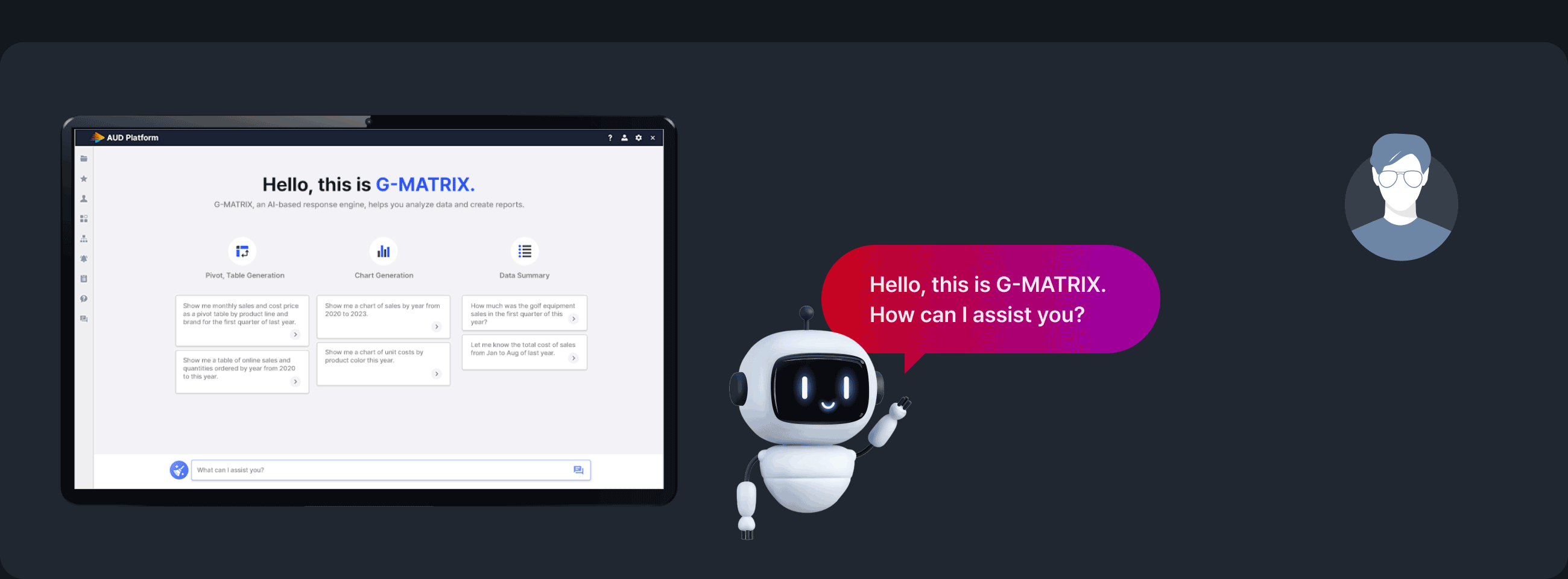
Functions
Natural Language Recognition
Analyzes users' natural language queries and converts them into a structure that can be processed by the meta-engine.
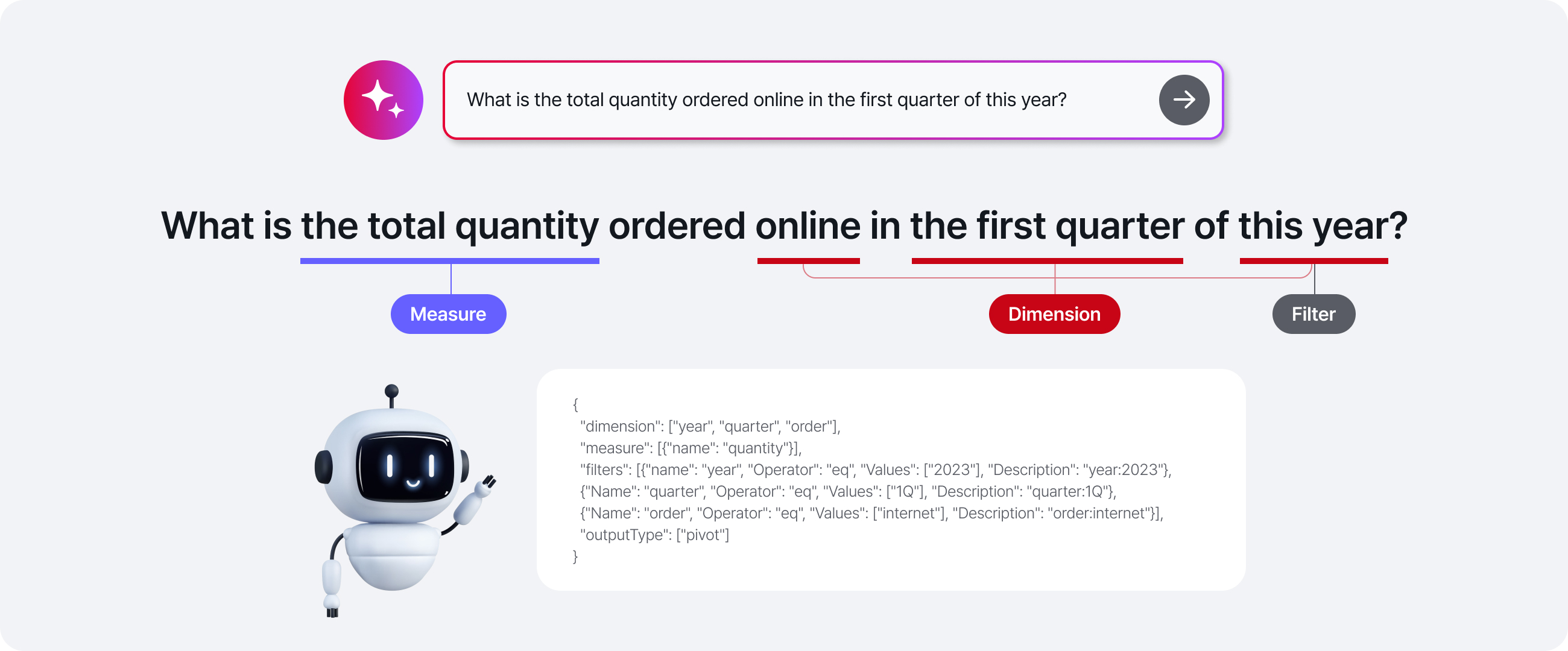
- G-MATRIX can process queries even if the keywords used are not exact matches for the database field names. For instance, terms like "product," "product name," "item," or "item name" are interpreted and mapped to the appropriate database fields to generate accurate queries.
- Minor typos or misspellings in the query do not affect the results. For example, if a user types "anternet" instead of "internet," G-MATRIX intelligently understands the context and provides the correct results.
- Even if specific data is not explicitly available in the database, G-MATRIX understands the intent behind the query and generates the required data. For instance, if the database lacks explicit "quarterly" data, a query like "first quarter" is recognized, and G-MATRIX calculates and aggregates the data for January, February, and March to present the result.
Automated Query Generation for Data Retrieval
Based on the analysis performed by the LLM, G-MATRIX's AI Engine automatically generates SQL queries to extract the required data from the database. G-MATRIX interprets the semantics of the input query to determine whether specific conditions should be applied in the WHERE clause or included in the SELECT statement. This ensures that the query conditions align precisely with the intent of the input query.

Delivering Optimal Result Screens Based on Query Intent
Leveraging AI and Low-Code technology, G-MATRIX provides various result formats tailored to the intent of the user’s query. Data is presented in multiple formats, including numbers, text, tables, pivot tables, visualization charts, and dashboards, enabling users to intuitively access and interpret the desired information. This ensures that the query results are not only accurate but also displayed in a format best suited for the user's analytical needs.
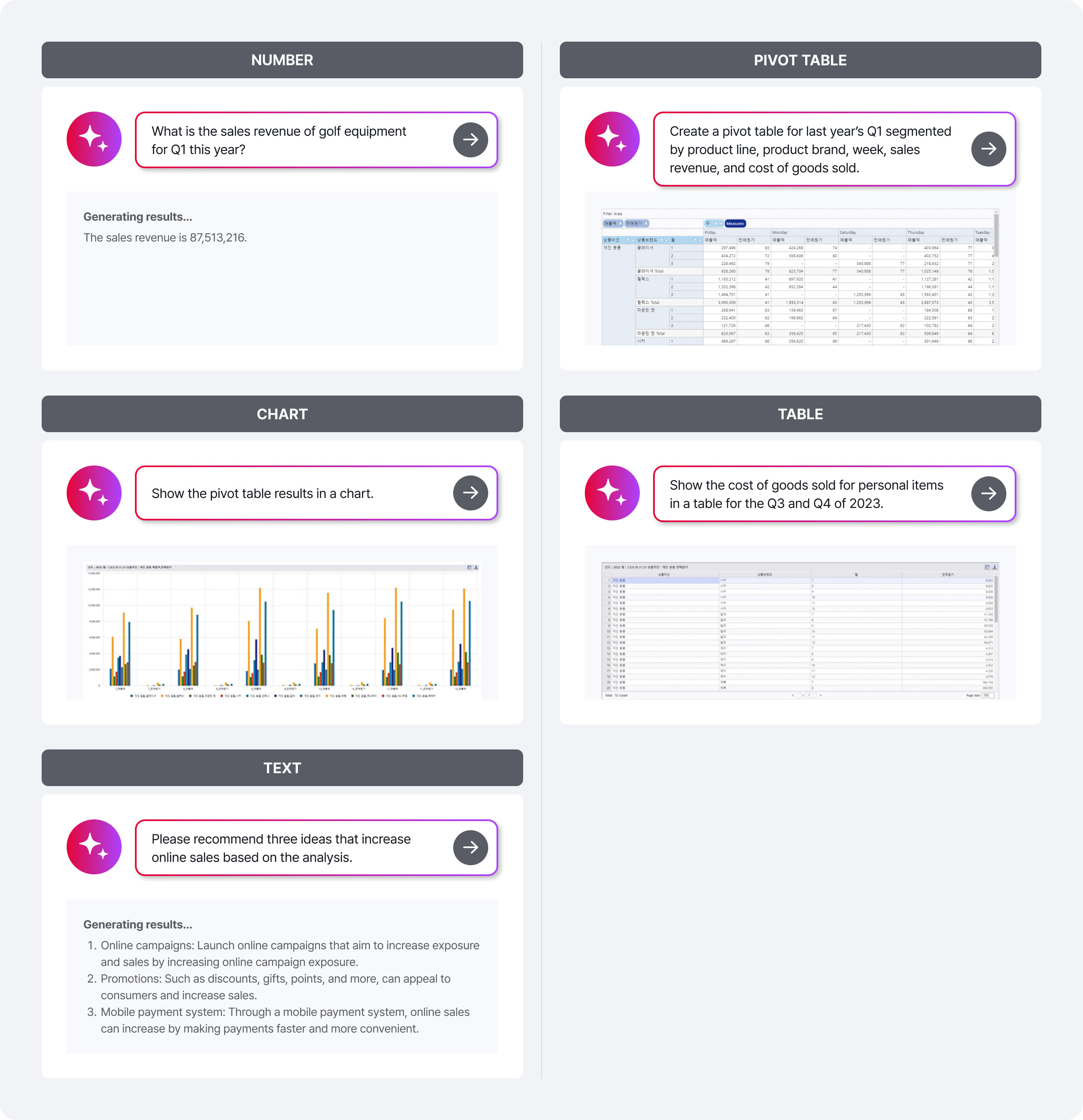
Personalized Learning
G-MATRIX learns the intent behind individual user queries, enabling personalized responses tailored to each user, even for identical queries.
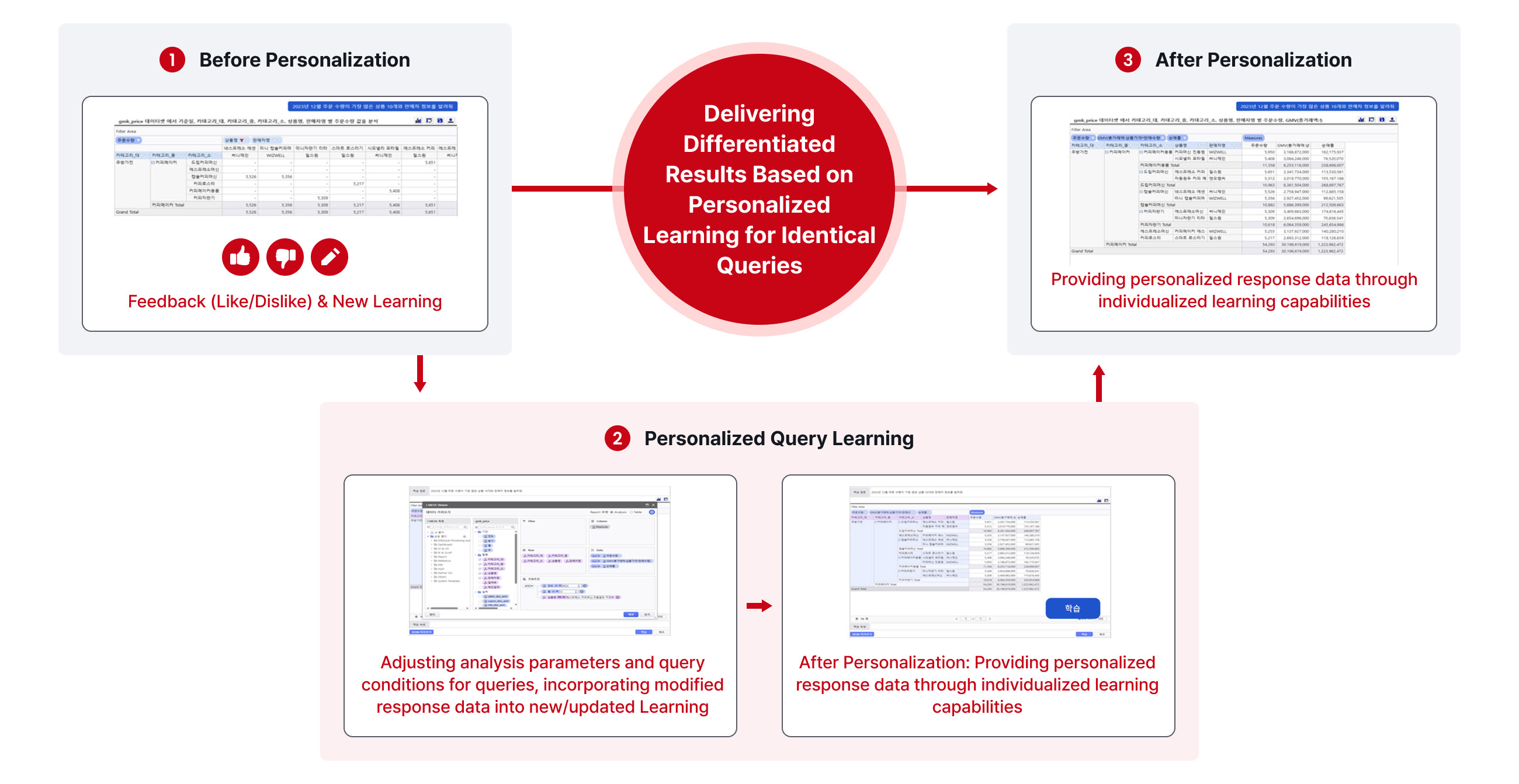
Prediction
Beyond analyzing business data to assess current operations, G-MATRIX leverages advanced AI algorithms to provide predictive insights, supporting informed business decisions. (Available from Ver. 3.0)
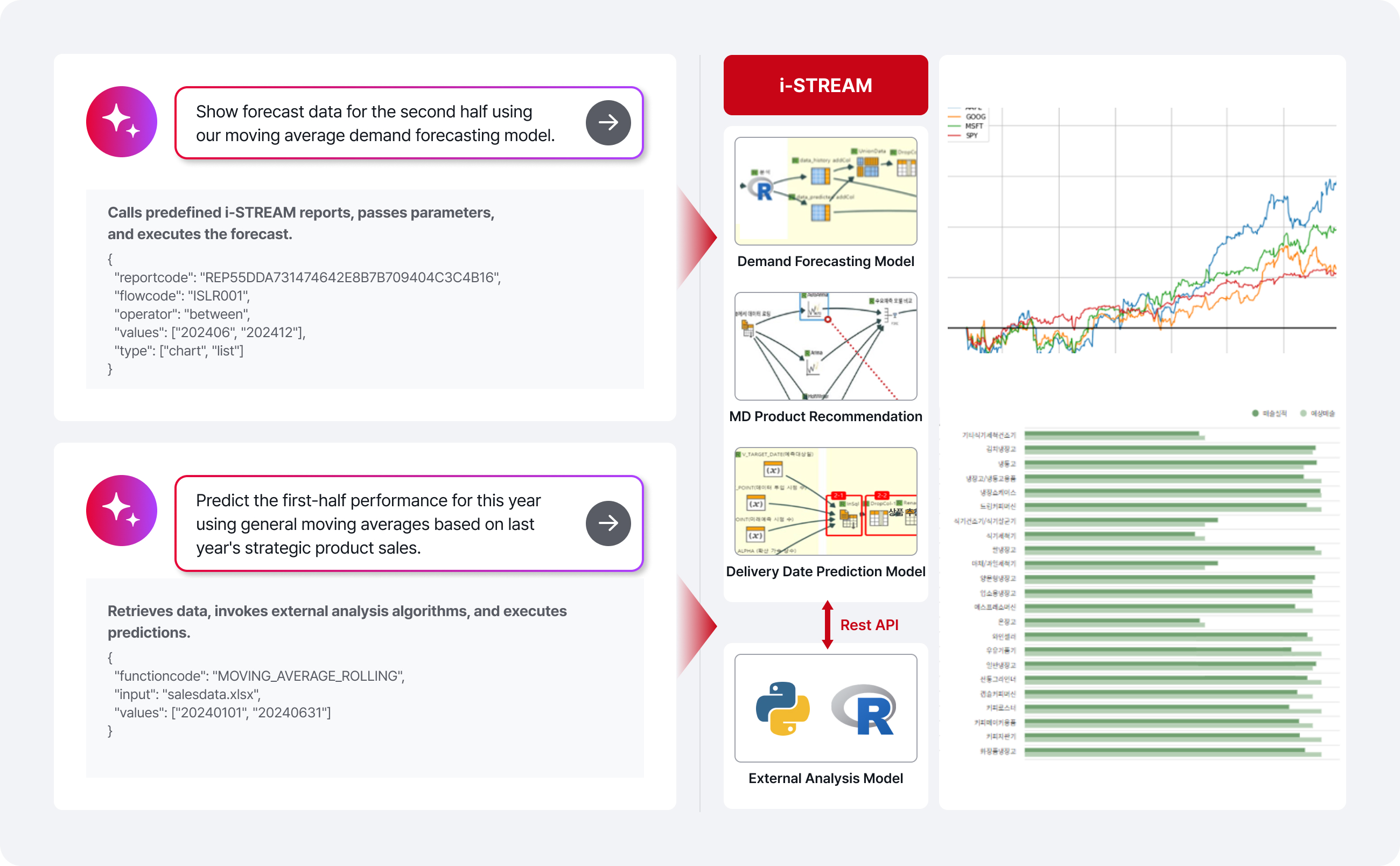
Productivity-Enhancing Additional Features
G-MATRIX offers various features designed to boost work efficiency and streamline processes:
- Result Data Storage: Save analysis results in formats such as Excel, PDF, or directly into the business system interface.
- Email Dispatch of Result Screens: Share and report analysis results by sending them via email
- Automated Scheduling for Repetitive Tasks: Automate repetitive tasks with a robust scheduling feature.
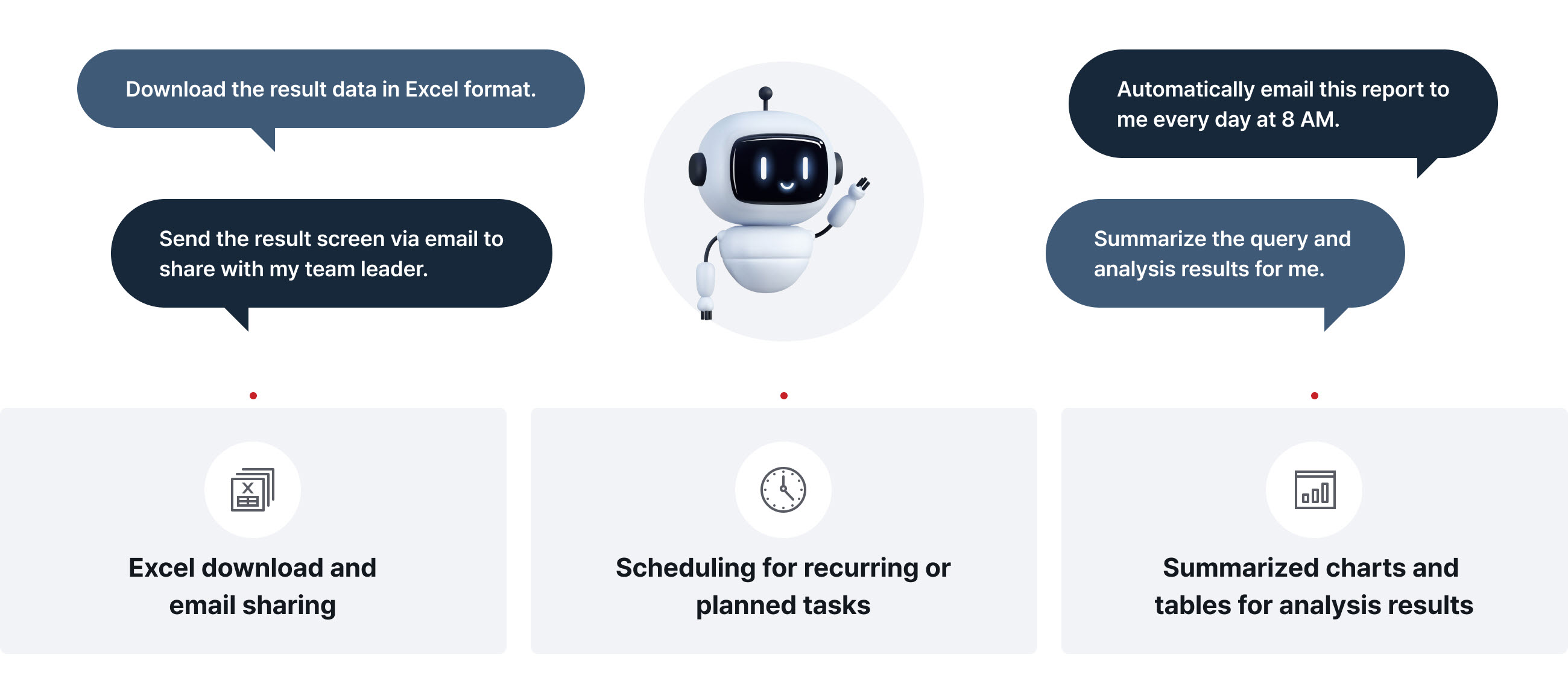
Process
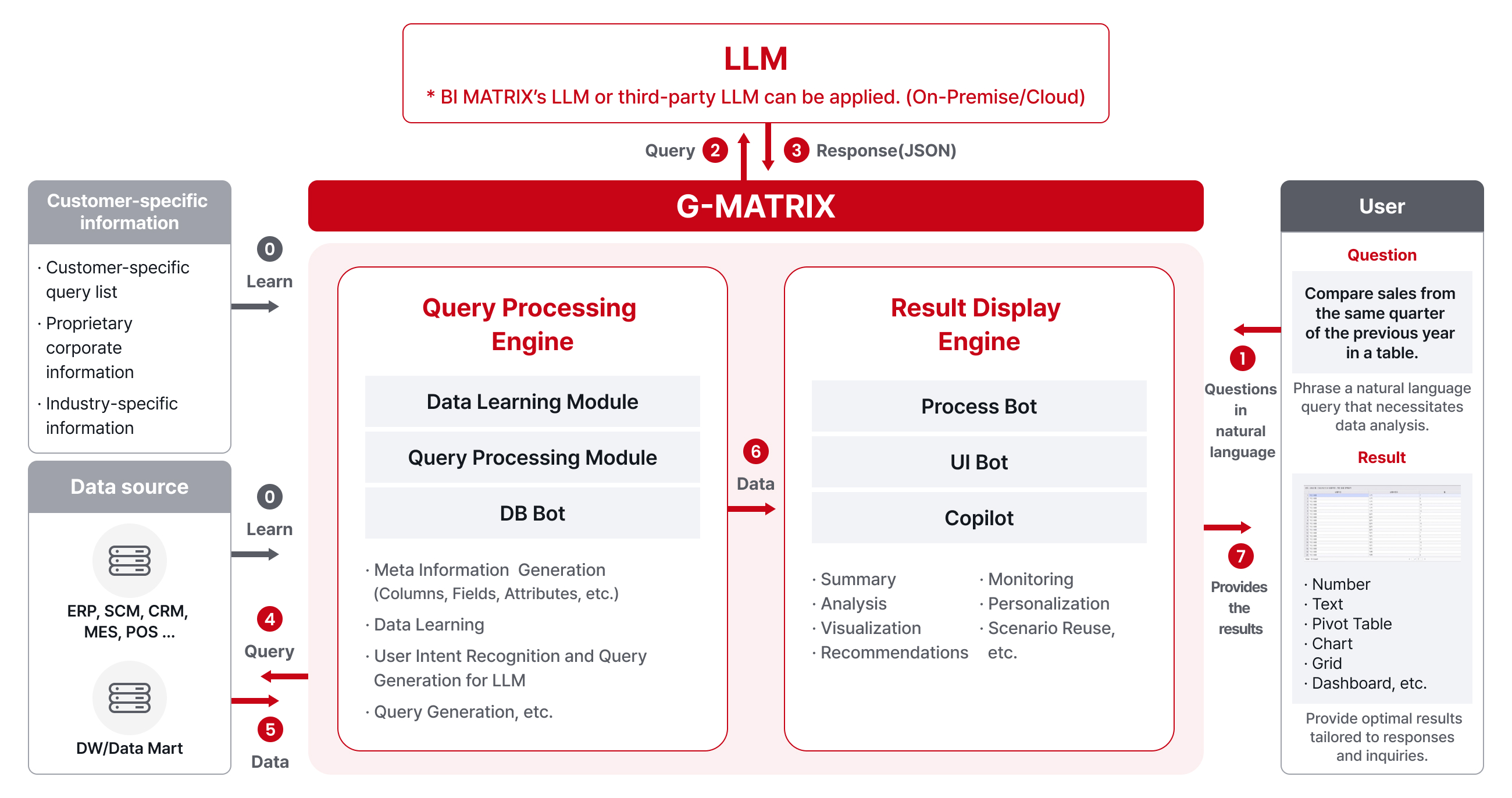
Features
Minimal Learning with High Accuracy
Unlike other generative AI solutions for database analysis, G-MATRIX seamlessly integrates with BI systems, fully utilizing their advanced data analytics capabilities. G-MATRIX eliminates the need to process and learn the entire corporate database. Instead, it only requires minimal BI meta-information, such as table names and column names, to operate effectively. By leveraging BI functions, G-MATRIX performs analyses based on retrieved data, ensuring highly accurate results. Additionally, because the analysis is conducted using real corporate DB data, it minimizes hallucination errors and provides trustworthy, actionable insights.
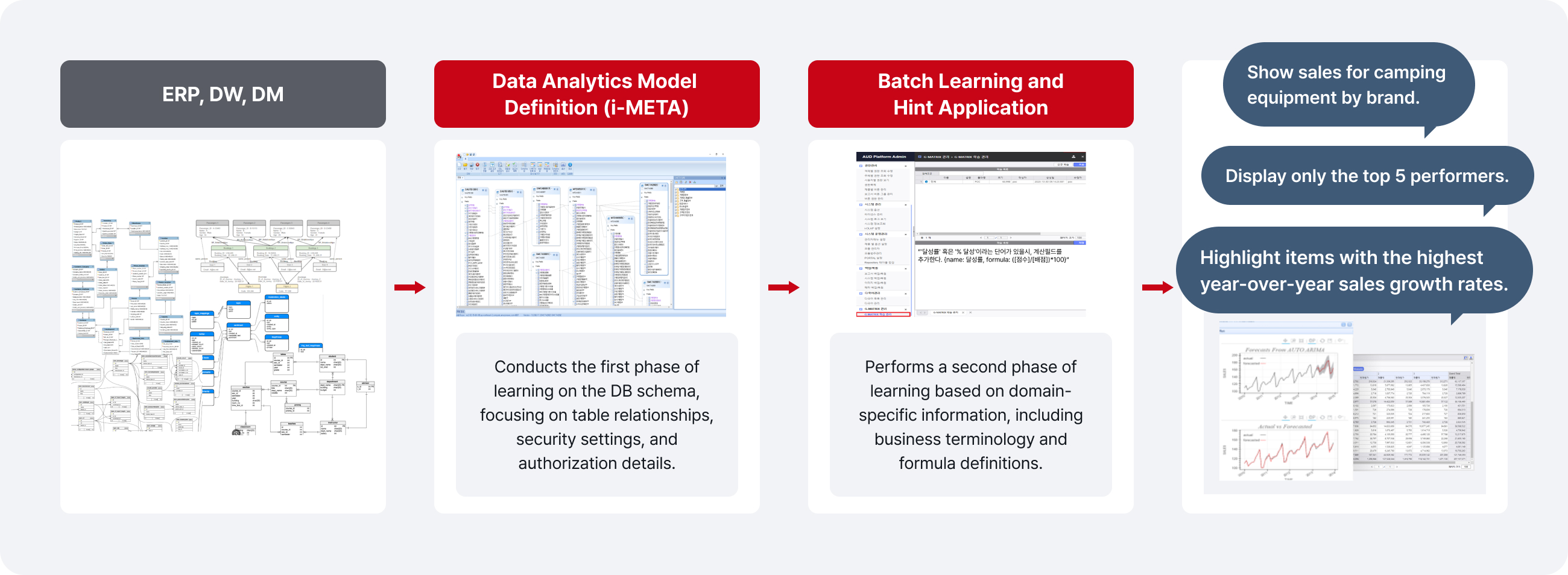
Integration with Diverse Databases
G-MATRIX seamlessly integrates with various databases deployed within organizations. Based on users’ natural language queries, it automatically identifies which database to query and retrieves the required data.
- Supported Database Types: SAP HANA, Oracle, MySQL, MS SQL, IBM DB2, and more.
- Flexible Environment Support: Legacy databases, data warehouses (DW), data marts (DM), and other systems.
Data Security
G-MATRIX ensures data security by avoiding direct learning of corporate database contents. Instead, it processes only minimal meta-information, such as table and column names, during the learning phase. This approach eliminates the risk of exposing sensitive corporate data during the learning process. Additionally, by implementing On-Premise LLMs, G-MATRIX operates within a private generative AI system hosted on the organization's internal network. This enhances data security and prevents the leakage of sensitive information.
Granular Access Control
G-MATRIX provides detailed access control by managing data permissions at the individual, department, and role levels. This ensures restricted access to sensitive data while maintaining the flexibility needed for company-wide data analysis. (Data without proper access permissions is masked, ensuring secure access. Users can participate in analyzing overall datasets but cannot view detailed information beyond their permissions.)
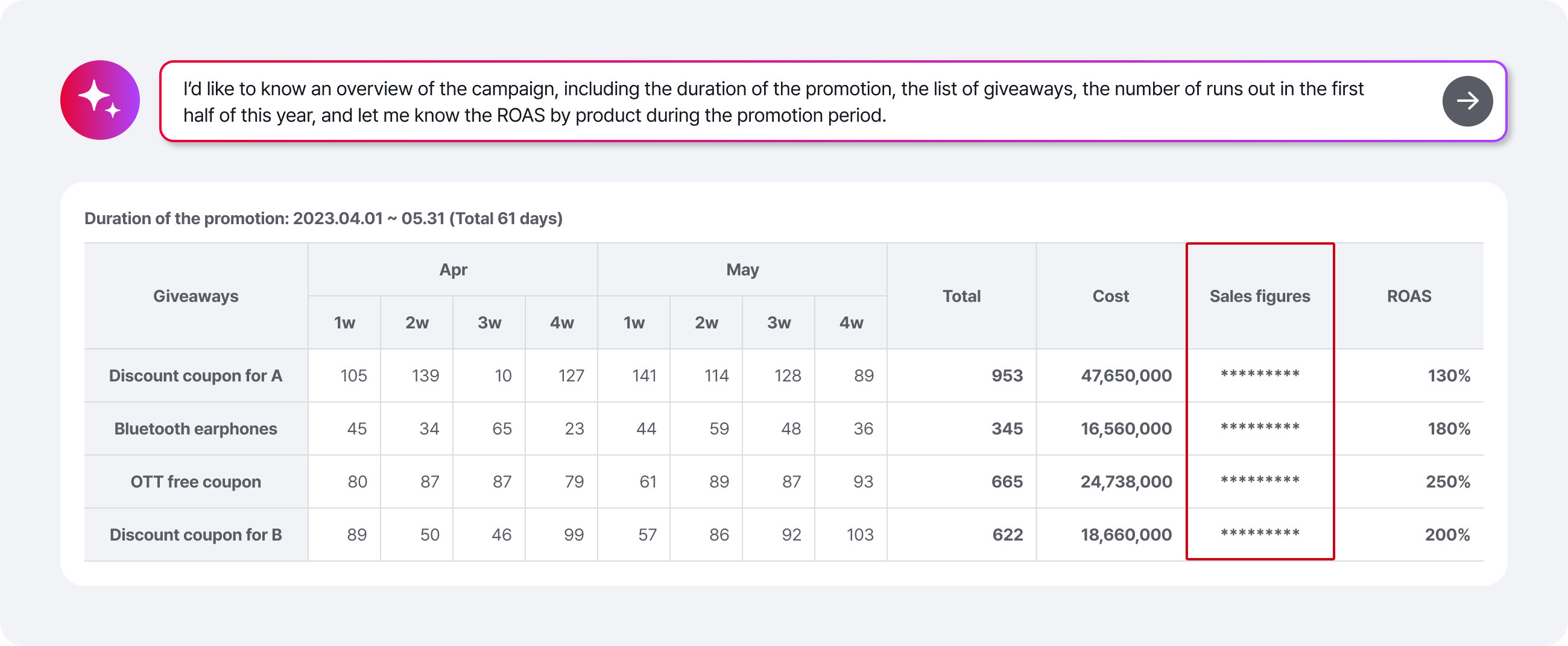
Integration with Collaboration Tools
G-MATRIX integrates seamlessly with enterprise collaboration tools, allowing users to make data queries directly within team chat windows. Just like assigning tasks to team members, users can click the ‘G-Chat’ icon in the chat window to request data or ask questions, and receive instant responses.
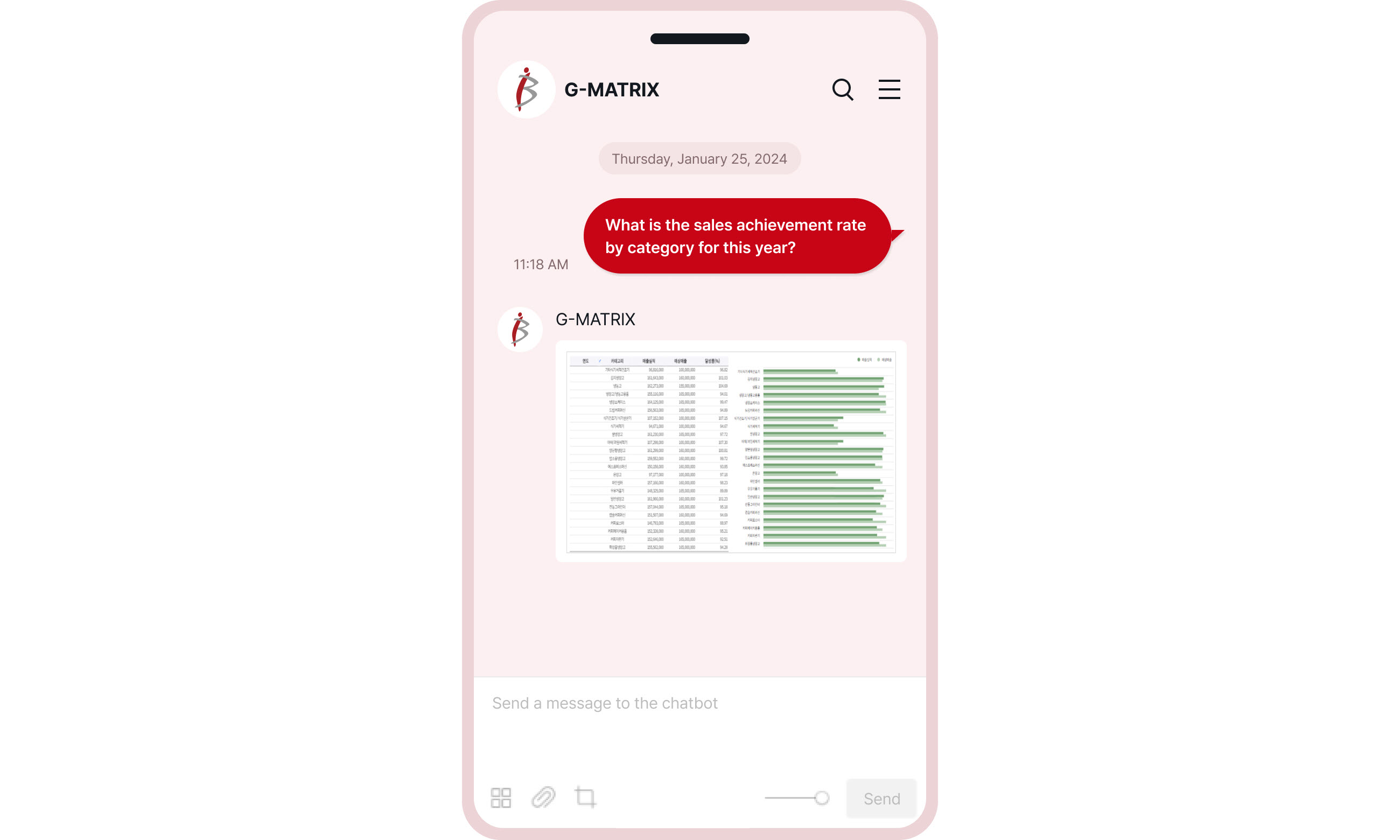
Support for Multiple LLMs
LLM (Large Language Model) refers to a large-scale language model trained on vast text datasets to understand and generate natural language. In G-MATRIX, the LLM plays a crucial role by generating JSON code based on natural language queries, which is then used to retrieve data from the database. By default, BI MATRIX’s proprietary LLM is implemented, and the platform supports both Cloud LLMs and On-Premise LLMs, enabling the application of the most suitable LLM tailored to customer requirements.
G-MATRIX MX-7B
G-MATRIX MX-7B is a lightweight language model developed by BI MATRIX, optimized for corporate data analysis tasks. With 7 billion parameters, it has been trained on over 50,000 industry-specific data analysis queries and various visualization dashboard templates. This enables users to extract data from database using natural language and receive visualization recommendations tailored to the data's characteristics. Additionally, G-MATRIX MX-7B is optimized for corporate data analysis, delivering high processing performance with minimal hardware resources. The model is available on Hugging Face.
